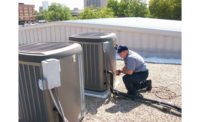The California Air Resources Board (CARB) recently adopted a regulation that would prohibit the use of HFC refrigerants, claiming that the chemicals trap heat in the atmosphere at a rate thousands of times that of carbon dioxide. The action was taken to preserve and continue in California some of the U.S. Environmental Protection Agency’s (U.S. EPA) prior prohibitions on HFCs. Last year, a decision by the D.C. Circuit Court of Appeals limited U.S. EPA’s authority in this area.
“The Board’s action today preserves the federal limits on the use of these powerful chemicals and refrigerants and provides more certainty to industry,” said board chair, Mary D. Nichols. “We applaud the actions of many industries, which already have made significant investments in developing and using more climate-friendly alternatives to the high-global warming HFCs.”
California has committed to take action in order to meet state and federally mandated emissions reduction goals. Under Senate Bill 1383 (SB 1383), a law authored by Senator Ricardo Lara in 2016, California must reduce HFC emissions by 40 percent below 2013 levels by 2030. California already has established an approach to reduce super-pollutants, the short-lived climate pollutants that include methane, black carbon, and a range of climate-changing chemicals and refrigerants, such as HFCs.
CARB was relying substantially on U.S. EPA’s Significant New Alternatives Policy (SNAP) rules to help meet California’s emission reduction goals for HFCs. HFC emission reductions are important to ensure California ultimately meets its larger climate goals. As a result of the recent court decision, California had to pass its own regulation to ensure it could meet those goals.
The regulation affects certain stationary refrigeration and foam end uses. It preserves emission reductions from specific sectors with past or shortly upcoming compliance deadlines and will prevent manufacturers from backsliding to start using high-global warming HFCs again. Most manufacturers already have transitioned, or begun the transition, to alternatives that have less of an impact on climate, that is, substances with much lower global warming potential.
The regulation adopted today applies mainly to equipment manufacturers, which cannot use prohibited HFCs in new refrigeration equipment or foams. Prohibited HFCs cannot be used in new equipment and materials in California for the following end uses:
- Supermarkets and remote condensing units, which are small refrigeration systems used by convenience stores;
- Refrigerated food processing and dispensing equipment, for example, Slurpee machines and frozen yogurt dispensers;
- Stand-alone, or small self-contained refrigeration units;
- Refrigerated vending machines; and
- Foams used in buildings and other places.
Also under the new regulations, manufacturers are responsible for a disclosure statement that must certify the product uses only compliant refrigerants or foam expansion agents. The regulation makes some of the partially vacated SNAP prohibitions enforceable in California and will lead to an estimated 3.4 million metric tons of CO2 equivalent emission reductions annually by 2030.
Publication date: 5/2/2018
Want more HVAC industry news and information? Join The NEWS on Facebook, Twitter, and LinkedIn today!







